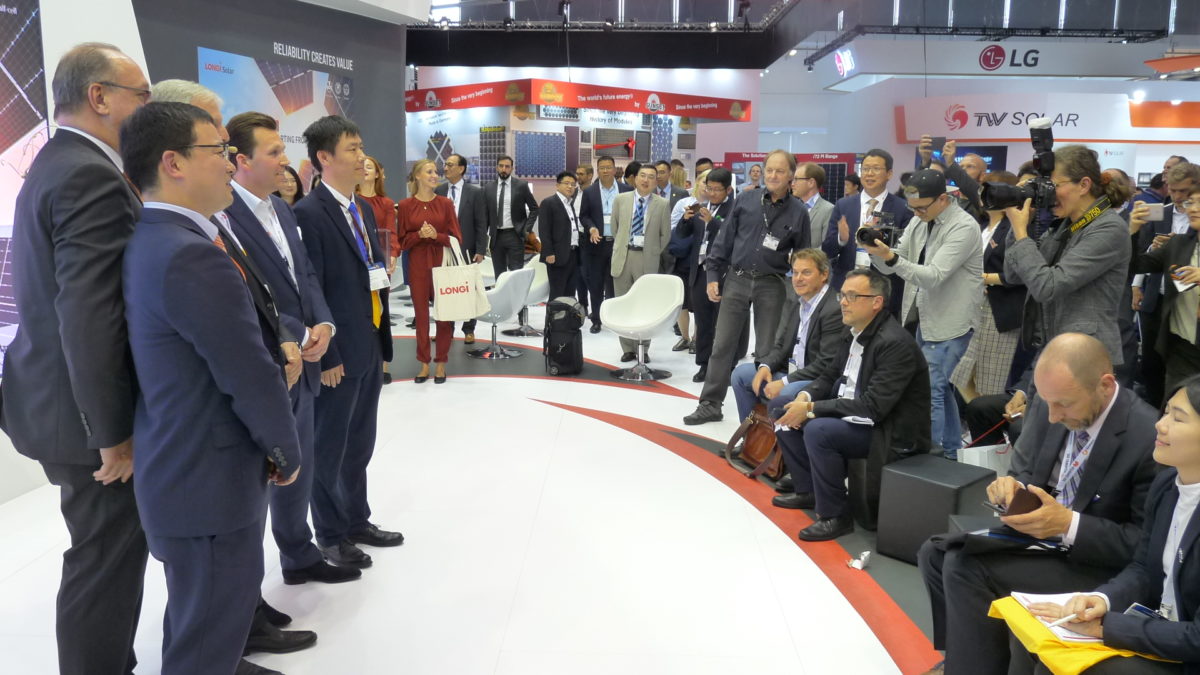The biggest just got bigger.
Solar manufacturing giant Longi Solar has revealed in its first-half update it has accelerated already ambitious plans to aggressively ramp up its annual production capacity.
In an update published by the Chinese company on the Shanghai Stock Exchange on Tuesday, Longi revealed its plan to reach a mono wafer production capacity of 65 GW by the end of 2021 will now be achieved next year. Longi had previously stated it would be able to churn out ‘only’ 50 GW of wafers by that stage, after notching 36 GW this year.
The step-change will be achieved by accelerating the development of the second phase of the Xi’an-based company’s 10 GW production facility at Chuxiong, in China’s Yunnan province.
As you were
Longi added it had commissioned a 5 GW monocrystalline module production line in Chuzhou, Anhui province but did not announce any changes to its stated plan to increase module output to 16 GW this year, 25 GW next year and 30 GW in 2021. The manufacturer also intends to increase its mono cell capacity to 10 GW this year, 15 GW next year and 20 GW in 2021.
A press release published to announce the first-half figures trumpeted a 31.75% decrease in Longi’s non-silicon production costs from the same period of last year, a rise in revenue from operations of 41% to RMB14.1 billion ($1.97 billion) and a rise in net profits to RMB2 billion, however the company has yet to respond to pv magazine’s request to see the full set of figures.
Longi said it cut its asset-to-liability ratio by more than half, year-on-year, and said it shipped 2.15 billion pieces of mono wafer in the six-month period, 712 MW of cells and 3,193 MW of modules. Of the latter figure, overseas module shipments of 2.42 GW amounted to more than three-and-a-half times the volume of products sold outside China in the first half of 2018, according to the company.
And the Longi PR machine echoed the call made by the company last week for its M6, 166mm² high-efficiency wafer to become the new industry template by stating it “is expected to become the standard size of the next generation of monocrystalline silicon wafers”.
This content is protected by copyright and may not be reused. If you want to cooperate with us and would like to reuse some of our content, please contact: editors@pv-magazine.com.




1 comment
By submitting this form you agree to pv magazine using your data for the purposes of publishing your comment.
Your personal data will only be disclosed or otherwise transmitted to third parties for the purposes of spam filtering or if this is necessary for technical maintenance of the website. Any other transfer to third parties will not take place unless this is justified on the basis of applicable data protection regulations or if pv magazine is legally obliged to do so.
You may revoke this consent at any time with effect for the future, in which case your personal data will be deleted immediately. Otherwise, your data will be deleted if pv magazine has processed your request or the purpose of data storage is fulfilled.
Further information on data privacy can be found in our Data Protection Policy.